|
So this is a sort of First Play! Love Letter: Adventure time, like Love Letter: Batman is a reskin of the original Love Letter. I'm not going to go into any particular detail here and will only list the notable differences. if you want to know more, the blog on original can be found here. Unsurprisingly, all the art featured throughout the game is sourced from the cartoon and the characters will be recognisable to fans. If you're not a fan, it's quirky and very cartoony-styled gentle parody of the original artwork with a bright palette, a style I find perfectly acceptable. Annoyingly though, some of the cards have been renamed; 'The Prince' becomes 'Hero', 'Handmaid' becomes 'Companion' and so on. I know that it's probably a better fit with the show's narrative and theme but it still means that even players who know Love Letter well will be referring to the rules! Instead of standard hearts or cubes, Love Letter: Adventure Time uses bright, multicoloured acrylic 'gems' to track scores and I have to admit they are pretty nice. With a couple of exceptions, the rules are broadly speaking, identical to vanilla Love Letter. Luckily, these additional rules don't break the game like some other reskins do but by the same measure, nor do they add anything to it and truth be told, can be easily ignored. Which is something I would do since I've always found the original Love Letter to have the best implementation of the rules. So is it worth getting Love Letter: Adventure Time? If you've already got some version of Love Letter; unless you're a completionist or a fan of the cartoon then you can skip this. However, if you're a fan and don't have a copy of Love Letter, it's a fantastic game and you should definitely get one and this version is a good as any. In fact if you don't have a copy of Love Letter, you should get one regardless!
0 Comments
23rd June 2022 It's another Thursday evening and we're in Aldershot for another gaming night. Village Green - a local game for local people? It turns out that competitions between local villages to have the best village green can be serious business! What's in a game?
Well that's it for the components - a deck of cards. The card quality average and what you'd expect from games nowadays. Watercolour styled artwork is used throughout the game on the green and village cards. depicting various items that could be found on an English village green (SIC). It's a pleasant style and the artwork all looks appropriately good, fitting it's theme quite nicely. The iconography is not so well implemented though. I felt the symbols used for the different types of flower could have been a bit more distinct or individual, especially since the icons are quite small. I also felt the 3 different types of tree icon displayed on the bottom of the green cards and award cards could have had been more distinctive. Otherwise, the iconography is fine. How's it play? Set up
On to play The objective in Village Green is to construct a tableau of 3x3 green cards while on the 'outside' of this 3x3 grid create a row and column of award cards to score points off of the green cards. Thus creating an overall 4x4 grid - including the village card which will be in the top-left corner. Village Green uses the usual turn structure of having the active player complete their action then having play progress to the player on their left. The active player can take 1 of the following 2 actions.
Endgame There are 3 criteria which may end the game. If either the green card or award card deck is depleted, or a player has placed 9 green cards, then the end has been triggered. The current is completed and the game goes to scoring. Player score from the following sources: A face-up village card scored 1 VP Each visible pond scores 2 VPs. Award cards score all the (Up to 3.) cards in their respective row/column. Points are tallied, highest score wins. Overall
On a basic level, Village Green is a fair simple game - pick a card and play a card, which makes it straightforward and quick to understand. However, like all good games, it's easy to learn but hard to master and this is definitely the case with this game. What makes Village Green tricky is having to literally think 2 steps ahead. Players will need to pay attention to a green card's type and colour when playing it because it will influence what is played next to it. Not only is positioning important when playing a green card but the order in which they are played will matter too. E.g., putting a green card into the centre of the 3x3 grid means that all 4 orthogonally adjacent cards placed subsequently must match the flower type and colour for that card. If the centre card is played last, then it would have to match all 4 cards already played and that requires planning ahead. Matching 3 types and 3 colours might not seem difficult but remember, players will only have a hand of 3 green cards and a row of 3 cards to draft from. Sure, a player can keep drawing and discarding green cards to hopefully get what they need, but this can catch a player out. Once the deck is gone - it's game over. Additionally, while rinsing through green cards, other players may be completing their 3x3 grids, which is also game over. Ultimately, players will need to commit to taking some risks and play early cards with gaps between them for some wriggle room for placing later cards and also rely on a bit of luck to get what they need. Award cards are also tricky to manage but in a different way. Players start with three, which can be good as it gives each player a initial individual scoring target to aim for. However, as green cards get played and players may be forced to put them in certain positions thanks to type and colour, it may end up that a award card scores less, zero or even worse - negative VPs! Luckily, award cards can be nullified by covering them with other award cards later. This though raises another quandary for players to ponder. The later an award card is played in the game, the harder it will be to place in a way to maximise it's scoring potential. Finally, there's some potential for higher level play by watching what cards other players are putting down, trying to anticipate their actions and denying them what they need. Although, since some of the icons are so small, it can be physically tricky looking at other players' tableaus with leaning over them! All of these mechanics are good because they always provide players with meaningful decisions as they try and positions cards so that they match type and colour as well as scoring criteria. Having written all of that brings me to a drawback of the game, which is that it can be a harsh and unforgiving experience. Players will be frustrated when unable to play cards and are instead forced to discard. It's likely that some players will end up without all their possible green or award cards - I know I did on my first play. So despite being easy to learn, I'm not sure this is a game for more 'casual players'? If it 'groks' with them, they'll be fine. Otherwise it'll probably take a game or two to get handle on where to player cards. There's not denying it's a elegant, fairly engaging game. It plays quick enough and will provide players the challenge of being able to place all their cards and also optimise scoring opportunities. Definitely worth a try in my opinion. 14th June 2022 It's a Tuesday and we're with the Woking Board Gaming Club at The Sovereigns for some gaming entertainment. I always thought a good leader leads by example and doesn't hide? On the other hand most leaders don't have to contend with 4 feuding factions and the undead! Hidden leaders is a fantasy themed sort of hidden role (Leader!) game with a dash of social deduction. What's in a game?
There aren't too many components to Hidden Leaders but they're all of a good quality as you'd expect from any modern game. The cards are OK, the board is fine and the meeples are of a satisfyingly chunky quality. Art-wise, Hidden Leaders is fantastic, each character is unique and has their own name and illustration, all of which are cartoony, brash and colourful, it's a style that appealing and perfectly fits the game's slightly humorous and not too serious theme. There are icons for the 4 factions which are easily understood as well as a handful of other icons. It doesn't take long to comprehend all of this and it won't prove an obstacle. How's it play?
On to play Hidden leaders is a game primarily about manipulating the 2 meeples on the board because their relative positioning at the game end will determine which faction wins the game and by extension which player wins. This done by recruiting i.e. playing hero cards into your personal playing to create your own band of heroes. There are 4 factions. Black: Undead. Blue: The Water Folk. Green: The Hill Tribe. Red: The Imperial Army. The game uses usual a traditional turn structure with the active player completing their action before play progresses to the player to their left. During the active player's turn, the following must occur.
Endgame The game continues until any player has put 5-8 face-up hero cards into play (Dependant upon player count.), face-down heroes do not count for the purpose of triggering the game end. When this occurs, the current turn is the last turn and we go to declaring a winner. First, the victorious faction must be determined, each one has their own winning criteria based on the positioning of the 2 meeples on the track. Black (Undead.) wins if both meeples are in the black area of the track, that is on spaces 9-12. This is regardless of the positioning of the meeples relative to each other. Blue (Water folk.) win if both meeples are on the same or an adjacent space on the track - provided of course they are both not in the black spaces. Red (Empire.) wins if the red meeple is 2+ spaces further along the track than the green meeple, so long as both meeples are not in the black area. Green (Tribe.) wins conversely, if the green meeples is 2+ spaces further along the track than the red meeple, again, Next; players reveal their hidden leader cards and face-down hero cards. The player whose leader is aligned to the winning faction, wins! It's quite likely that more than player will have a leader aligned to the winning faction. If this is the case, then the player with the most hero cards aligned to the winning faction wins. Overall
The first thing to mention is the game's asymmetrical winning criteria, it's something I've not seen elsewhere and is key to Hidden Leaders' appeal and informs all of the gameplay and tactics mentioned below. The objective is pretty straightforward in Hidden Leaders. Players will not only be trying to manipulate the meeples to their own advantage but also trying to deduce the motives of their opponents from their actions. This will allow players to try and anticipate their opponent's actions to their own advantage. E.g., a player moves the red meeple up closer to green one which is ahead, is it because they want to bring them together to want the red meeple to overtake the green or do they want to put the meeple in the black area. In this example, one single move can work towards the winning conditions of 3 factions. Interestingly, when cards are discarded to the wilderness, it's face-down so others can't try and see which cards are essentially worthless to the discarding player. Further more, players will at least 1 face-down hero. All of this is compounded by each leader being aligned to 2 factions so it can be hard to try and guess which faction they're supporting. It's a great use of 'imperfect knowledge' mechanics that will keep players on their toes. Hidden Leaders is a fairly easy to learn rules-light game, it mixes this accessibility with a higher level of play and depth of complexity that comes from trying to anticipate the actions of opponents that will make players think. So, while theoretically the game has a reasonably quick play time, some players will spend a lot of time analysing their options and next move. In short; the analysis paralysis can be strong with this one and it seemed to take longer than expected. But that can be down to the players. It should also be noted that whilst Hidden Leaders doesn't really have direct interaction between players, it definitely has a bit 'take that' mechanics. It's not too harsh to be fair but it's there and I for some players this is a no-no. Having said all of that, I found the gameplay a little slow, it felt like 1 card-play/actions wasn't quite satisfying enough and it felt like there was a bit too much downtime between turns, although we did play with a player count at the higher end. Otherwise I can't fault Hidden Leaders. If card games fairly heavy on deductive reasoning and trying to gauge the motives of other players are something you like, you'll probably find this engaging and enjoyable. 24th May 2022 It's a Tuesday and we're with the Woking Gaming Club in The Sovereigns. Fly as free as a err flying pirate? Libertalia: Winds of Galecrest is set in a world of fantastical aerial ships, anthropomorphic heroes and adventurous voyages to find loot and lost treasure. What's in a game?
Component quality is solid throughout, cards, tokens and tiles are well constructed but the chunky loot tokens really stand out, even if I have to resist the urge to try and unwrap and eat them. Libertalia: Winds of Galecrest makes use of excellent use of bright, eye-catching, cartoony art presenting a larger than life setting and characters. About a dozen icons are used throughout the game, they are all fairly clear and easily understood. How's it play? Setup
That's pretty much setup done. On to play Libertalia: Winds of Galecrest is played over 3 'voyages' which have a length of 4, 5 and 6 days. For each day, a player will put a character card into play and this is done secretly. Thus over all 3 voyages each player will use 15 character.
Endgame Play progress until the night actions for the 3rd and final voyage are resolved. Players compare their scoring dials. Points are tallied, highest score wins. Overall
Libertalia: Winds of Galecrest feels like a complex game but in practice is quite straightforward. In essence, a character card is played and the resolved up to 3 times. Where the game's complexity comes from is how a character card played interacts with character cards played by other players. Everyone starts with the same hand of cards and will acquire a further identical 12 cards during the course of the game. It means that all players will be using the same 18 cards played over in total 15 actions. But since it's unlikely that all players will make use of the same cards at the same, it means the game encourages players to watch their opponents. Knowing when someone has or hasn't played a certain card can prove very useful. This contextual information can allow players to adapt their tactics and can change the flow of the game. Additionally; Libertalia: Winds of Galecrest injects a dose of 'take that' into the game, the 40 cards have a varied set of abilities that can be brought to play, including being able to eliminate other characters, pulling cards out of the graveyard, etc. It's also worth noting that while the 'calm' side of the game board has the potential for some friction between players the 'stormy' side increases this. The game also provides short and long term goals which require short, mid and long term strategies. Day abilities on cards give players immediate benefits, but dusk and night abilities can also provide desirable benefits. A player may choose to put a high value character card on to the initiative track so they go earlier in the dusk phase to secure a certain type of loot. Which brings me to long term strategy, loot is vital here. Loot typically provides benefits during the end of voyage phase and the loot for all days is openly shown on the board which players must take this into consideration during the whole journey. All of this means that Libertalia: Winds of Galecrest hits a sweet spot of accessible but tactical game play. Players are always given meaningful decisions to make using a degree of imperfect information. I found it an engaging game. Definitely one to try. 14th May 2022 It's a Saturday and I'm in Aldershot after a impromptu get together with some friends. Flip City AKA Design Town is a light and uncomplicated push-your-luck deck building game about developing a city. What's in a game?
The cards are all the standard quality you'd expect from a card game. The game uses brightly coloured stylised art throughout and I always like this kind of artwork and I think it looks good here. additionally, the cards can be placed next to each to make a city landscape. Yes, it's unnecessary but it's a nice touch and shows some extra thought has gone into the presentation. Flip City uses some iconography, but all of it is clear and easily learned or understood. How's it play? Setup
On to play Each's active player's turn will consist of up to 2 phases, a play cards phase in which they play as many cards as they want or go bust and a buying phase.
Endgame Play continues until 1 of 2 winning criteria is met.
Overall
Flip City describes itself as a microdeckbuilder and it's not really wrong. Most deck-builders come with a supply-market of 10 card types or so but Flip City makes do with 4 types (5 if you include the micro-expansion), although they are double-sided, so there are actually 10 types of card. Even so, it's a very compact feeling game. For me however, where Flip City differentiates itself from other games of its kind is the implementation of a push-your-luck mechanic. It works well here, especially in conjunction with meeting the winning conditions, essentially forcing players to continue drawing cards and pushing their luck until they either have 8 VPs or 18 cards in play. As a result, Flip City is a little different to many deck-builders, which at their core are more-or-less about creating cash-generating engines to purchase cards that will earn them more cash during the early-game or VPs during late-game play. In Flip City, generating cash is still important because it allows players to acquire more cards but some of those cards will have to work towards being able to draw 8 VPs or 18 cards. Flip City is a quirky, charming, fairly light and quick to play pocket-sized deck-builder that presents players with some meaningful paths to winning and choices as well as some unusual game play and a nice little risk-and-reward mechanic. Given it's light nature, I'm not sure how the game will hold up to repeated play but that's sort of missing the point. This is a fun filler game that is good to ply every once in a while. It's worth a try and if deck-builders are you thing, then this will probably appeal to you. 13th May 2022 Friday the 13th continues and we in Farnborough for some more after work gaming goodness. Many games have small components that could be considered choking hazards, that however is not the case with... Joking Hazard, a game inspired by the Cyanide & Happiness comic strip. What's in a game?
There's not much more to say about the cards, they're quality is pretty good, considering the game's origin, the artwork is exactly what is expected and the game uses no iconography. How's it play? Setup
On to play Individual cards in Joking hazard essentially have no context and this is a game about putting them into context by constructing jokes out of 3 comic panels, only the comic panels will be to some degree randomly created.
Endgame The first player to win 3 points, wins! Overall
Joking Hazard is an accessible party game that can be played by up to 10 participants and is equal parts mildly amusing and mildly offensive. Well... as offensive as the Cyanide & Happiness comic it's based on. So I guess if you're easily offended, you might want to give this a miss. From a gameplay perspective, you would be forgiven for thinking Joking Hazard is just the same as other 'you be the judge' games. However, Joking Hazard differs because individual cards have no context. There is no statement A and answer B. The players create context themselves, which gives the game a slight edge. Is it any good though? The answer is; sort of, which to be honest, is not a good answer really and a bit of a cop-out. But the truth is; this games clearly sits in the domain of beer-and-pretzels. If you're going to be playing it with a bunch of slightly dour-faced gamers who usually play 6 hour empire building, resource managing, epoch spanning games, no one's going to enjoy this. However, if you play it with some work colleagues or non-gamers who's only understanding of games is 'Is it like monopoly?' then they'll probably have a blast, especially if they've had a drink or two and that's who the game is targeted anyway. 13th May 2022 Friday the 13th! And I'm in Farnborough with work colleagues for some gaming fun. Viva la resistance! Will you overthrow the tyrannical oppressive government or welcome your new overlords? Let the cards decide. Resistance is a hidden role card game that is also the predecessor of Arthurian themed The Resistance: Avalon and as such is mechanically almost identical to that game. In fact The Resistance or at least the basic version of it is actually a simpler game than The Resistance: Avalon. Reading my blog about The Resistance: Avalon will tell you everything you need to know about The Resistance. A full write-up here would be pointless. There's only 1 notable difference: The basic version of The Resistance only has 2 role cards, resistance fighter and spy. Otherwise the games play identically. At the start, each player is given a secret role as a resistance fighter or spy. The key thing here is that the spies know who each other are and are trying to sabotage the missions while the resistance fighters are trying to uncover the spies. The mission leader chooses a team and all players vote on whether to approve or reject that team. When a team is finally chosen, they all go on the mission. This involves the team voting on whether a mission succeeds or not. Resistance fighters must choose to succeed at missions but spies can choose to either succeed or fail. All of these decisions and voting are done in secret and resistance fighter will need to watch the voting, who votes in what and the outcomes of the voting. Spies will need to be patient, revealing their hand too early will flush them out. If by then of the fifth mission, the spies have not sabotaged 3 missions, then the resistance wins. If 3 missions are sabotaged Overall
There's not too much to add here, everything I said about The Resistance: Avalon also applies here, but that was sometime ago and I can't remember exactly what I said. So I'll summarise here. Mechanically, The Resistance is pretty solid with a easily understood set of rules that give opportunities for lying, deception and deduction. There's nothing to fault there. The quality of the game though, comes almost entirely from the participants. Players who love to bluff and mess with other players will revel here and be in their element. Whilst those who aren't fans of this type of game are likely to find it slightly uncomfortable, won't enjoy it and thus probably won't play it as well. So if you're fan of hidden role games and are playing with like-minded people, The Resistance is definitely worth trying. 30th April 2022 It's a Saturday afternoon and Wogglecon 3 with the Woking Gaming Club is in full swing. The next game of the day was Machi Koro 2 which is the follow up to the most excellent original Mach Koro and which you can read about here. Like its predecessor, Machi Koro 2 is a tableau and engine building card game all about constructing a city, What's in a game?
Components in Machi Koro 2 are all good. The cards are pretty standard cards as you'd expect. The coins feel solid and the dice are slightly larger than usual dice, they're plastic but also rounded, chunky and have a bit of heft to them. Machi Koro 2 uses an art style that's identical to the original. Brightly coloured stylised almost cartoony illustrations of establishments and landmarks. The colours are very distinct, which is good because colour plays an important part in the game. There are a few icons in Machi Koro 2, for the different types of establishment and types of effects on landmarks. It's all pretty clear what they mean and it won't provide an problems for players. How's it play? Setup
On to play Machi Koro 2 uses the traditional turn order with the active player playing their turn before the the player to their left becomes the active player. During their turn, the active player has 3 phases to play through.
Endgame When any player purchases their 3rd landmark, they immediately win the game. Overall
Machi Koro 2 is a that's fairly easy to pick up and play light-to-mid weight game that has a quick playtime. The game generally presents players mostly straightforward but meaningful decisions about buying cards. Should a player spread their cards over a range of numbers to get better coverage, or concentrate on fewer numbers but getter pay outs when the numbers come up. Players will also need to consider what those numbers are. e.g., 6-8 will come up most often - provided players are rolling 2 dice have a good chance of being activated. Speaking of rolling dice, in Machi Koro 2 players are able to choose to roll 1 or 2 right from the start. This is another decision that players can make, sometimes they'll want to roll certain numbers or avoiding rolling them and using 1 or 2 dice can alter odds of doing this. Much of this ties in with how the activation numbers are distributed across the cards. A lot of the 1-6 cards will immediately generate cash but the cards that combo off of them tend to be in the 7-12 range. Going to 2 dice was described by a player as 'going up a gear'. It can be pretty hard to slowly build up cash over rounds to get landmarks because other players can essentially 'nickel and dime' it away, gearing up makes it easier to get big cash in a single roll to avoid this. And talking of nickel and diming, another strategy to consider is the red card strategy. Using red cards to fleece other players of their coins is a pretty effective strategy, it denies them coins and earns them at the same time - but you won't make any friends that way! The downside of this approach is that canny players will try their best to spend all their coins, the game's timing explicitly states that red activations occur before any other, thus if opponents have no coins, you can't collect them with a red since their blues/greens/purples activate after red. It means that in a quirky reflection of real cities, players will want to be as close to bankruptcy as possible! Unlike blue/green cards, reds are not guaranteed to generate income. Machi Koro 2 is a little on the light side (Not that I consider that an issue.) and perhaps a little too quick to end, which may not be to everyone's taste. One other thing to mention is that there's definitely a dollop of luck to the game, I'm fine with it and actually think it's an important part of the Machi Koro experience but some players will find this off putting. I do have a couple of relatively minor issues with Machi Koro 2. In the original Machi Koro, the card variety in the base game was fairly low, when 'The Harbour' expansion was added to the base game, Machi Koro went from being a 'nice' game to a 'great' game. I feel the same is true of Machi Koro 2 as well. There are only 20 different types of establishment and 10 will be visible right from the start. After playing a few games, players will have more or less seen everything the game has to offer at a basic level and and will habitually fall into familiar patterns or strategies depending how establishments emerge. An expansion would shake that up, I would love to see extra cards for Machi Koro 2. Finally, the rules for landmarks having actions that all players can activate in their turn is a little inelegant, requiring players to remember what landmarks other players have acquired or be reminded of them by those other players. Otherwise, I think Machi Koro 2 an un-taxing (Sic.) fun and breezy game to play that's worth trying if lighter games are your thing. How does it compare to Machi Koro? I've heard Machi Koro 2 described as Machi Koro 1.5 and there's definitely a sliver of truth to that. Anyone who's played the original will be familiar with nearly everything in Machi Koro 2. If it's not broken... So apparently there was also some criticism of the original where it was stated that there was a lot 'whiff' in the early game - where players would roll the dice and nothing would be activated. There was further criticism that the original had too long a play time. It's clear that Machi Koro has tried to address these issues. The 3 rounds of buying will allow players to have a better spread of numbers at the start. Having to only buy 3 landmarks will also make play quicker (Although the cheaper landmarks are way more expensive than the cheapest landmarks from the original.). Landmarks with ongoing effects that activate in any player's turn also make the game quicker and can add an extra layer of interaction between players, although I've frequently seen players avoid these cards, instead optioning for once-only landmarks and I sort of feel that way myself. This is the only thing I see as a possible misstep. Changes to the game have made the red cards a bit more powerful, there's little opportunity to punish players who buy red cards in Machi Koro 2, other than one of the landmarks (Machi Koro had the publisher card to do this.). I don't think this is too much of change though and YMMV. So anyway, all of this makes the game clearly quicker to play but I feel that perhaps it's a little too quick. Sometimes (Especially when someone gets a good roll or two.) a game can be over before players can adopt an emergent strategy. I never found that the original was overlong. Don't let this put you off playing Machi Koro 2, it's of a similar quality as they original. Even though I own the first game, I was happy to buy and play the second and would recommend it to players of the original as well as to people who have never played it. 20th April 2022 It's a Wednesday and we're round Simon's for an evening of gaming. Unlock! The Escape Game are a series of games drawing inspiration from escape room games and as you'll have gathered from the name, Star Wars: Unlock is a Star Wars themed Unlock! game. Time to escape Star Wars! Note: Unlock! games come with 3 scenarios and in the case of Star Wars: Unlock!, we played the Secret Mission on Jedha scenario, one of the harder scenarios and which involved being nasty Imperial spies running round a desert. What's in a game?
Star Wars: Unlock! is a card game with a map, quality wise it's exactly what you would expect of cards and a small paper map, which is to say; perfectly acceptable. Art-wise, like all Star Wars licensed games I've seen, the quality is consistently high throughout. I don't know whether the art was created specifically for this game or was sourced from what must be a huge archive of art that has been produced and accumulated over the decades but regardless, it's all looks good and has a appropriately Star Wars feel to it A few icons are used throughout the game, they're pretty clear and self-evident, I can't imagine they would prove an obstacle to players. How's it play? Setup
On to play Star Wars: Unlock! is all about discovery and deciphering clues which will eventually lead to the scenario's conclusion. Functionally, the game works a little like a gamebook where players would get to choose which numbered paragraph to read, except in this game it's done with numbered cards instead of paragraphs. There's also a bit more to Star Wars: Unlock! than most gamebooks though, especially in relation to how the app is utilised. It's tricky to describe how the game plays, especially without some sort of spoiler but basically, the players collectively try to solve the puzzles presented to them. What follows are descriptions for actions players can take.
Endgame There's no way to lose Star Wars: Unlock! per se, when the countdown reaches 0 it instead simply goes into 'negative time'. After reaching a scenario's conclusion, the app will then rate the player's collective performance from 1-5. Computer says you get only 1 Star! Overall
Star Wars: Unlock! pulls some clever tricks with how it uses cards and how it combines them with the app to provide some engaging obstacles to overcome. We're not geniuses by any stretch but nor are thick, so for the most part the scenario was well balanced, we were stumped for a while on a couple of occasions and referred to the app's hint system for a card once. Otherwise the game was more or less straightforward. The play time is fairly brisk in Star Wars: Unlock! with players facing with some unusual problems to solve while under the pressure of a ticking clock. The box states that 1-6 people can play but I'm sceptical about this. I just don't think that there's enough to do to occupy 4 people, let alone 6! By the the game's very nature, there tends to be a lot interconnectivity between cards and the clues they represent. This means that it's not particularly conducive for solving challenges to split cards between players and as a result, the cards will tend to be be hogged by some players while others are left twiddling their thumbs. Playing with 3 people might be OK, 2 players and you're golden. I'm also not a fan of app-driven games and licensed ones even less so: Eventually that game license will eventually and what happens to the apps distribution then? Having said that, there's little replay value to the game, once all 3 scenarios are completed successfully, players will have no reason to return to the game. Putting those (Non game.) criticisms aside, if you like puzzles and problem-solving, then this may well appeal to you and if you also like Star Wars, then doubly so. Especially since it's also a fairly accessible crossover or gateway game the could attract fans who are non-gamers. 15th April 2022 It's a Friday and we're logged into Board Game Arena for some afternoon gaming. Take a road trip across America, visit the landmarks, go wildlife spotting, play some sports, end where you started? Send a postcard (Or write a letter from America.), walk 500 miles, maybe walk 500 more... OK, enough of the tenuous references. Boomerang: USA combines set collecting and roll and write mechanics into a point salad of a scoring game. Caveat: We've only ever played Boomerang: USA digitally. What's in a game?
The only artwork in the game appears on the 28 cards and is obviously referencing the locations the cards represent. It's pretty artwork too, with blue skies and bright colours. Using letters/symbols for cities is a smart move and easily understood. Boomerang: USA makes use of 4 types of sets to collect and each set will feature its own range of icons, it means that the game has a fairly large array of icons. Luckily, it's clear which icons belong to which set and players don't need to reference a rulebook to know what they mean since the game is about matching icons in their respective sets. How's it play? Boomerang: USA is played over 4 rounds and uses a drafting mechanic where players pick a card from their hand and then passes the remaining cards to their left, then all chosen cards are revealed (Or not for the first card.) simultaneously. This continues until all cards have been selected and players have acquired 7 cards.
Endgame Once the 4th round is completed and scored, players then total their final score from across all 4 rounds. Points are tallied, highest score wins. Overall
On a basic level, Boomerang: USA is a straightforward drafting game. It's point salad of scoring mechanics makes the game complex, most of the blog above talks about the 7 ways to score VPs. Some of the scoring methods have pretty standard elements, collecting matching pairs or 1 kind of set are common, however, restrictions on how these are scored, particularly for Americana activities add an unusual twist. The throw and catch mechanic is the standout here, presenting players with a clear risk and reward choice right at the start of a round especially when this is when they'll have all 7 cards to choose from. Play a 1 as the throw card and it's guaranteed to score but is only worth 1 VP. Playing a 7 as the throw card earns 7 VPS but requires a 7 as the catch card; since player have no control over what their last card will be it's a risky proposition. Typical for a game of this type, it's more or less impossible to score well in all categories at the same and the dilemma of what a player should prioritise is what drives the gameplay. Should a player concentrate on getting locations and regions (Which are another type of set really.) over other sets? Is it a good idea to have a steadily increasing Americana score over round, or go high then score 0 to score high again? When is a good time to try and get a good score in a particular activity? A lot of this will be contextual or unpredictable, it's the nature of this kind of drafting game. Players will probably start a round with no clear direction and will need to adapt to a strategy and recognise what to prioritise as it emerges from whatever cards they pick. There's also a higher level of play where players can watch their opponents to try and gauge what they're concentrating on and deny it to them: If it looks like an opponent is trying to complete coast-to-coast, a player might chose and play a card with the location needed themselves in order to deny that other player. Although I'm not sure that denial tactics are that effective though, it's entirely possible blocking a opponent will involve blocking yourself as well. I felt like the travelling, roll and write element was a bit out of place here, adding extra layers of what seem like unnecessary complexity the game. So while the game has depth thanks to all these scoring opportunities, it actually felt like it was perhaps a little detrimental to the experience, increasing thinking time and inducing some analysis-paralysis as a consequence. Otherwise I can't really find fault with Boomerang: USA, it's not a bad game by any stretch, it just somehow didn't appeal and seemed a little unengaging. Maybe the theme of being a tourist did quite gel with me? I feel that there are other mechanically similar games that are a little more accessible and quicker to play. Obviously, YMMV, a fan of card drafting games who plays them often might find the roll and write part of Boomerang: USA a fresh take in the category. |
AuthorI play, I paint. Archives
March 2024
Categories
All
|























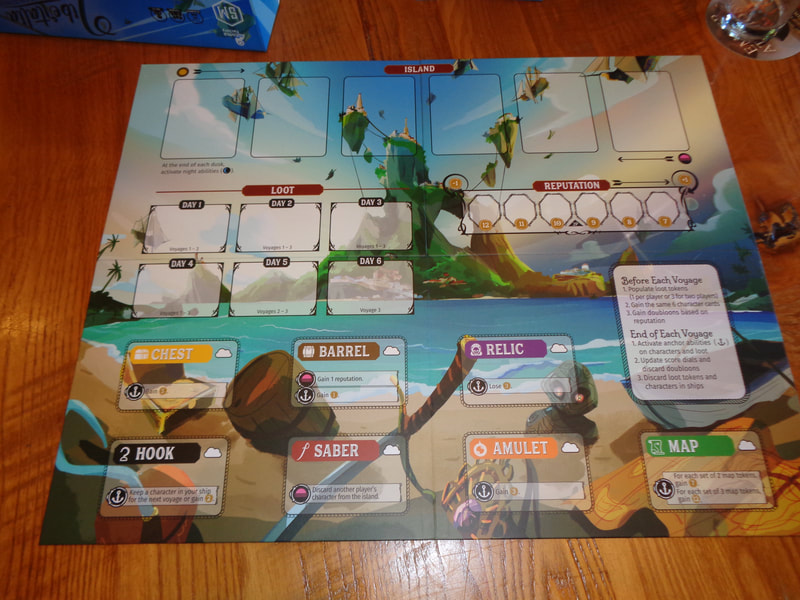
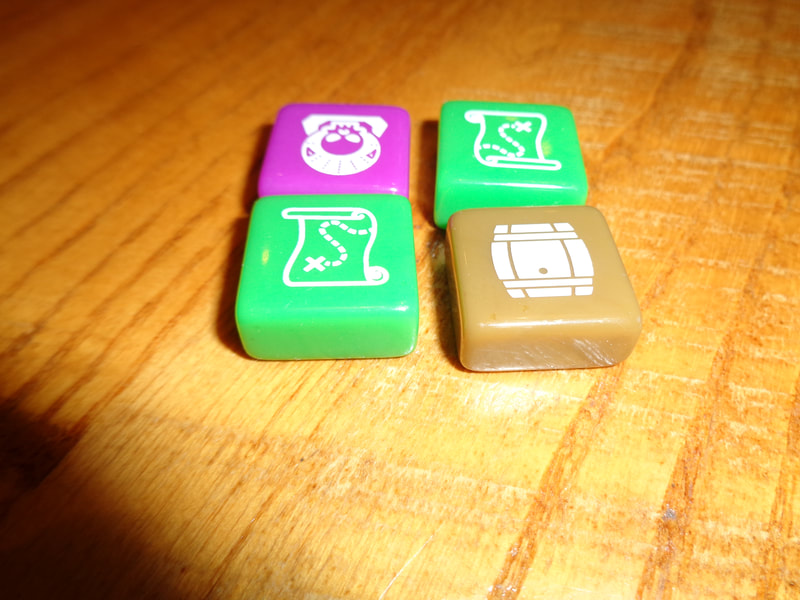
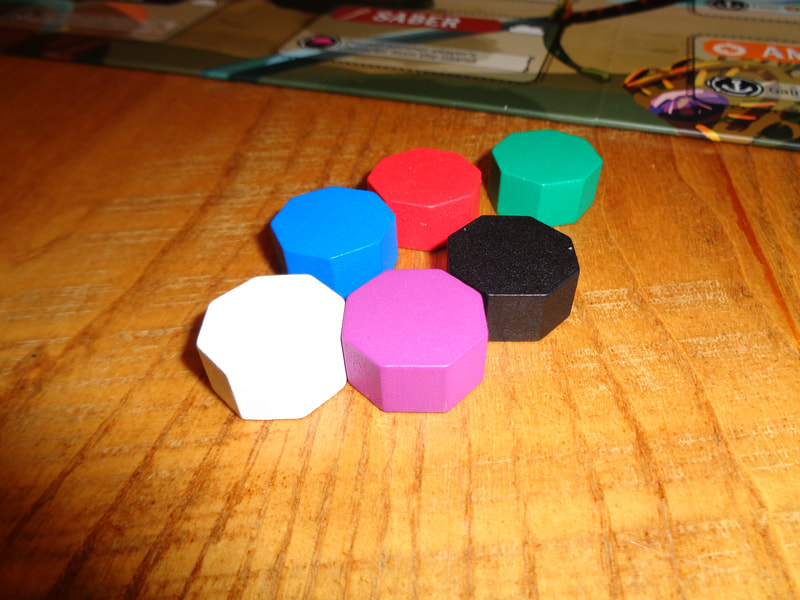
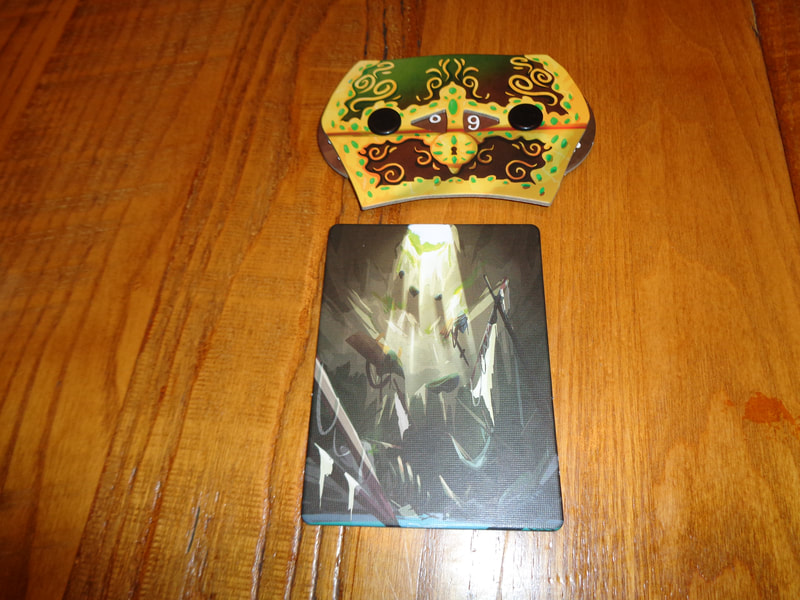
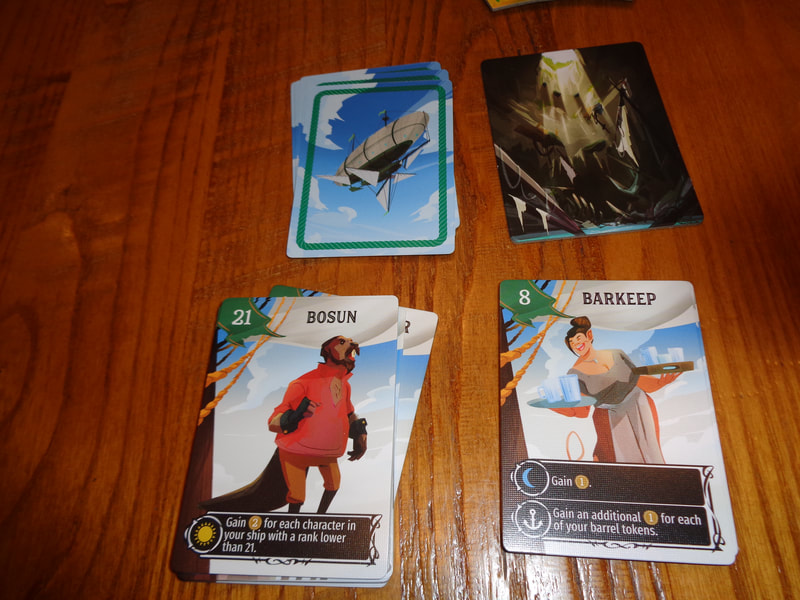
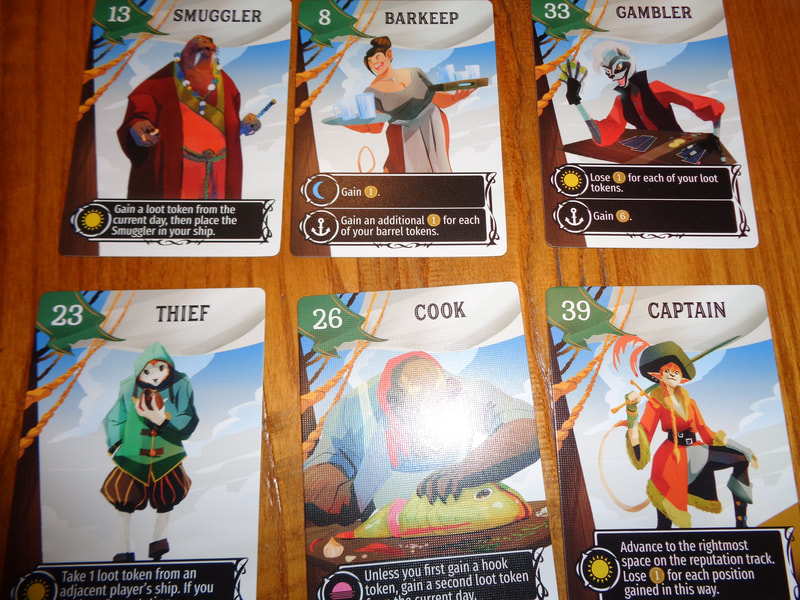
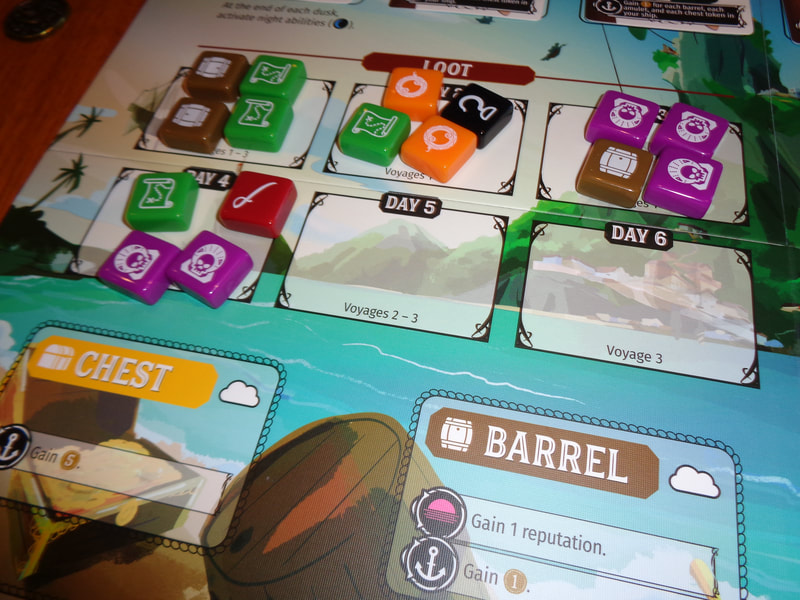
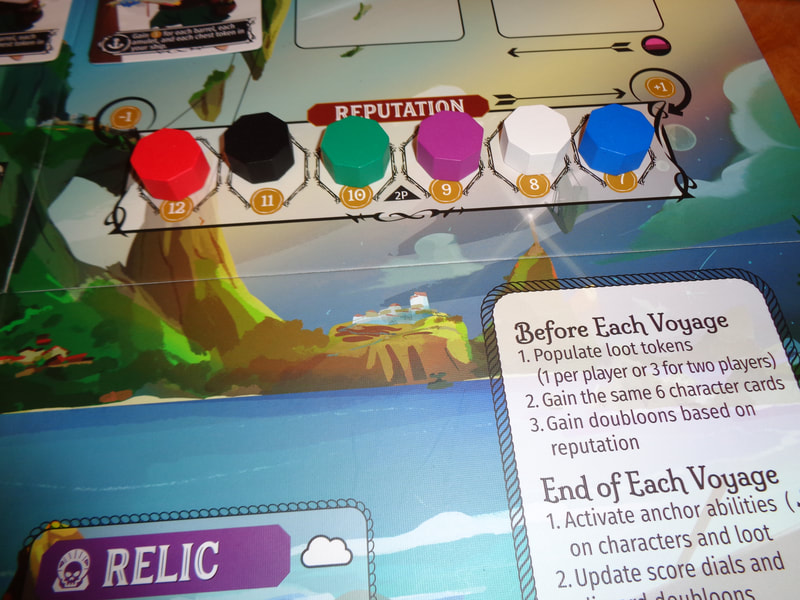
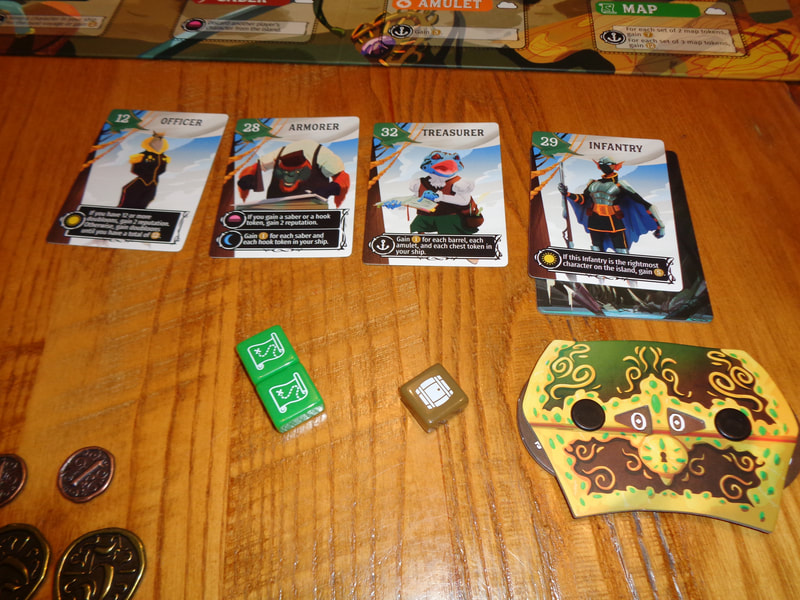
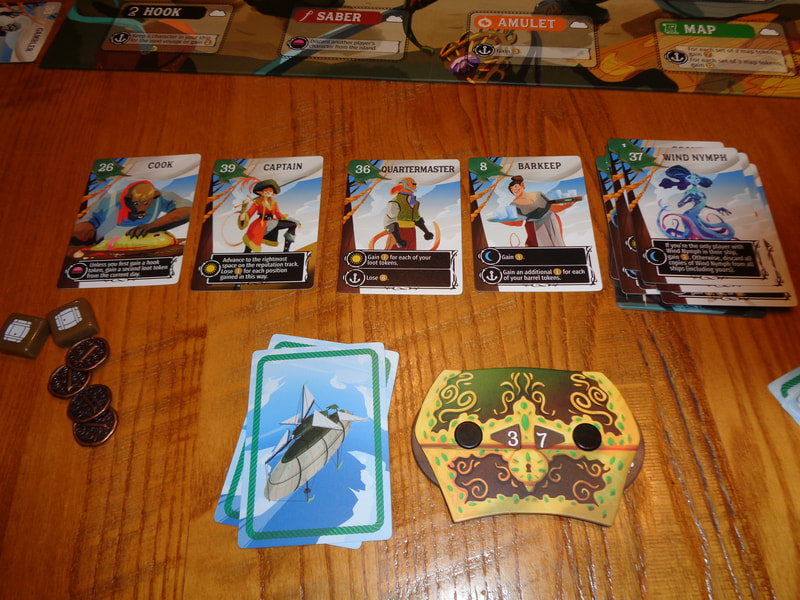
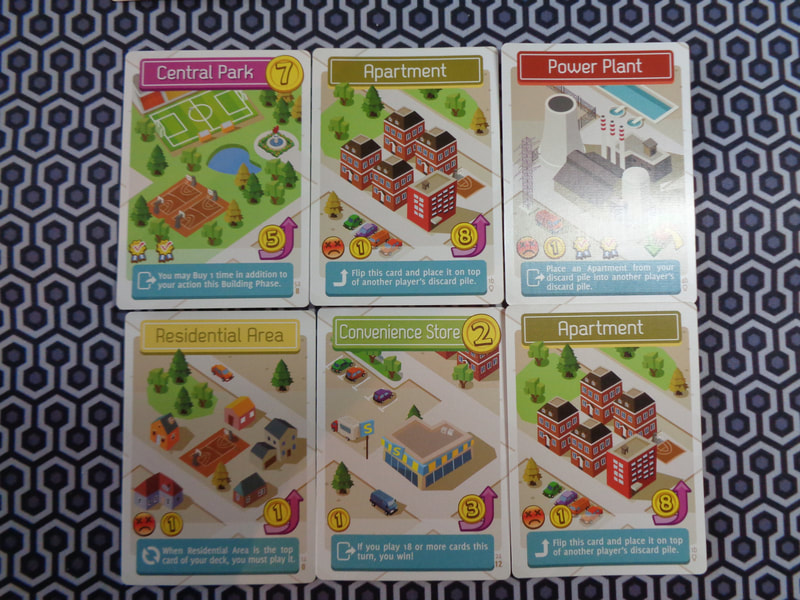
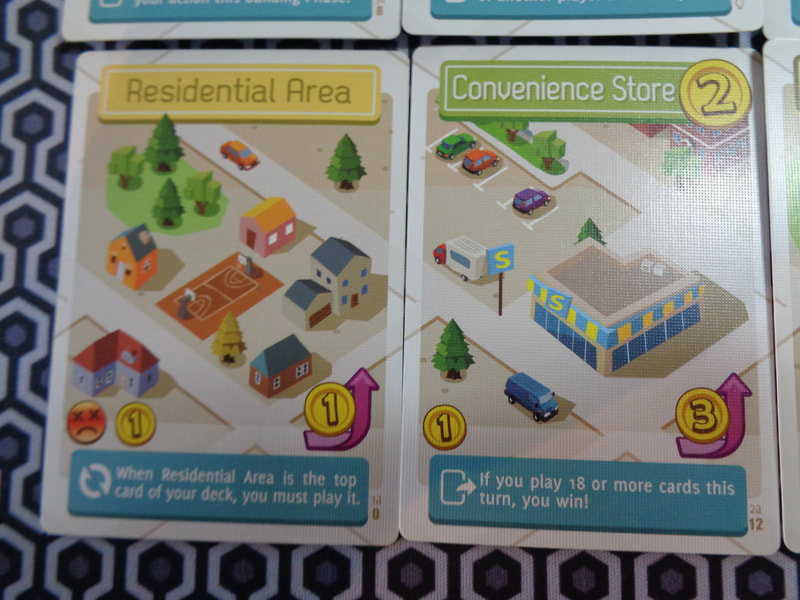
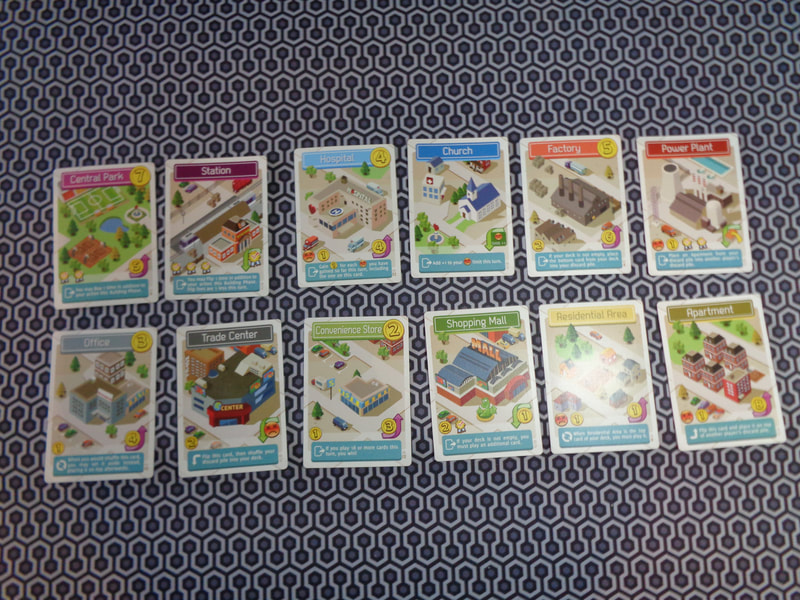

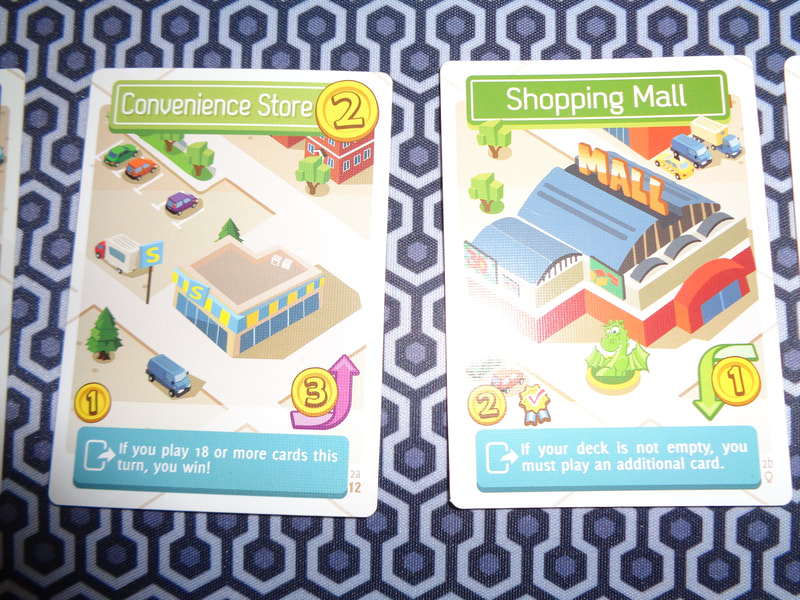
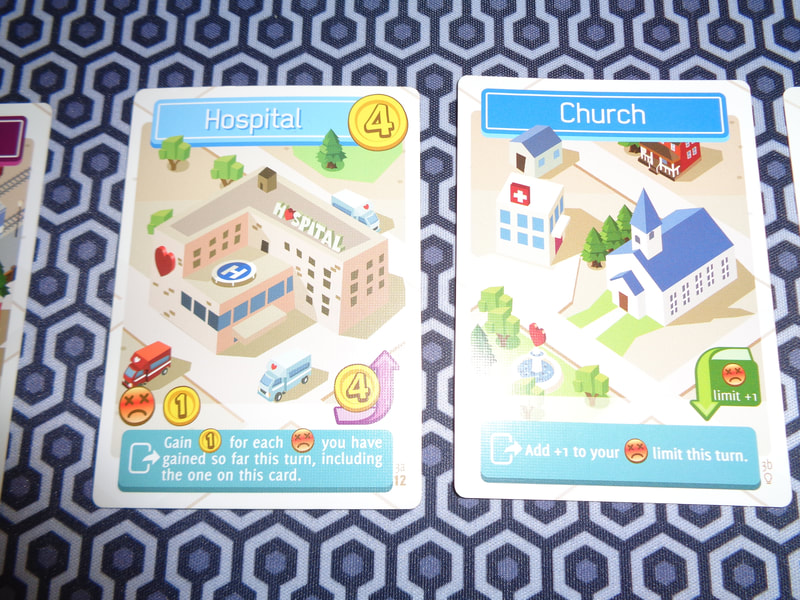
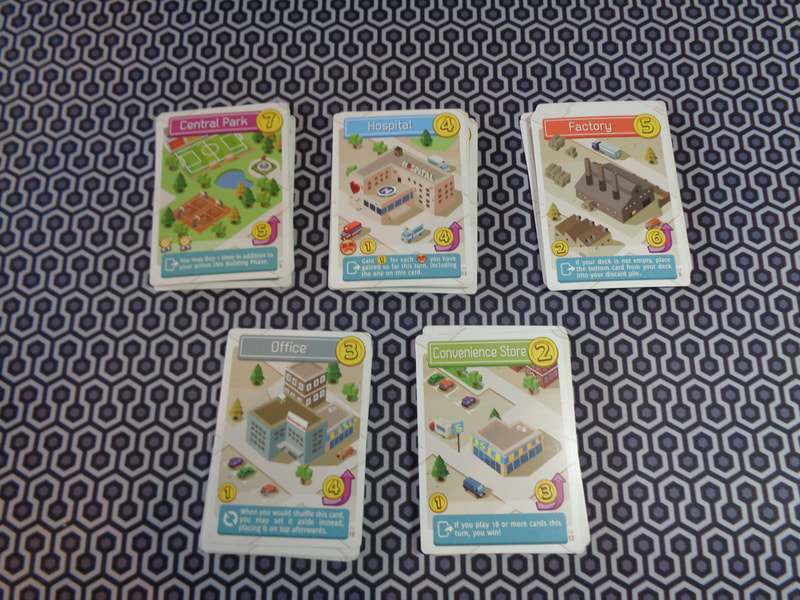
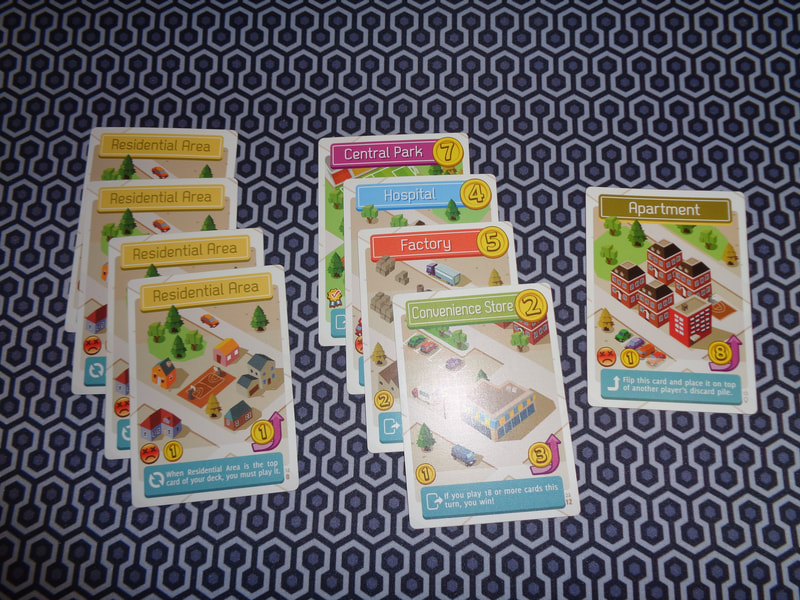
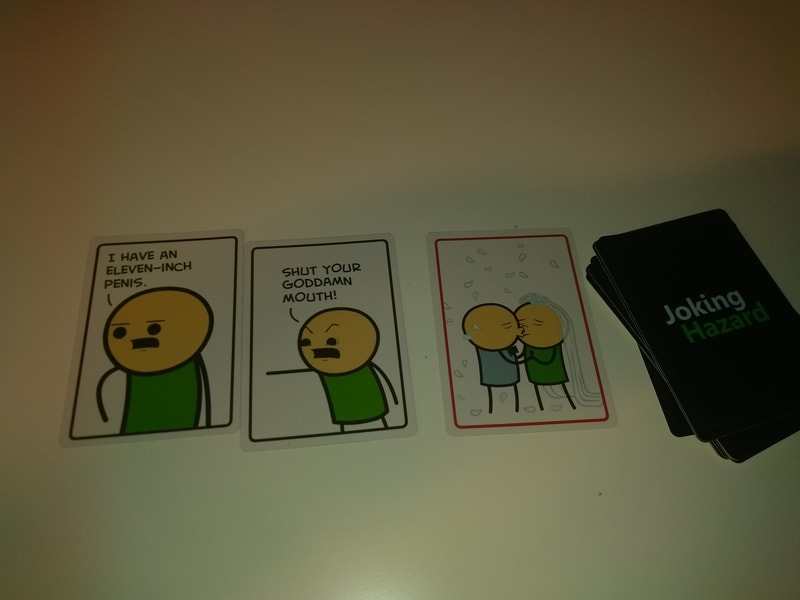
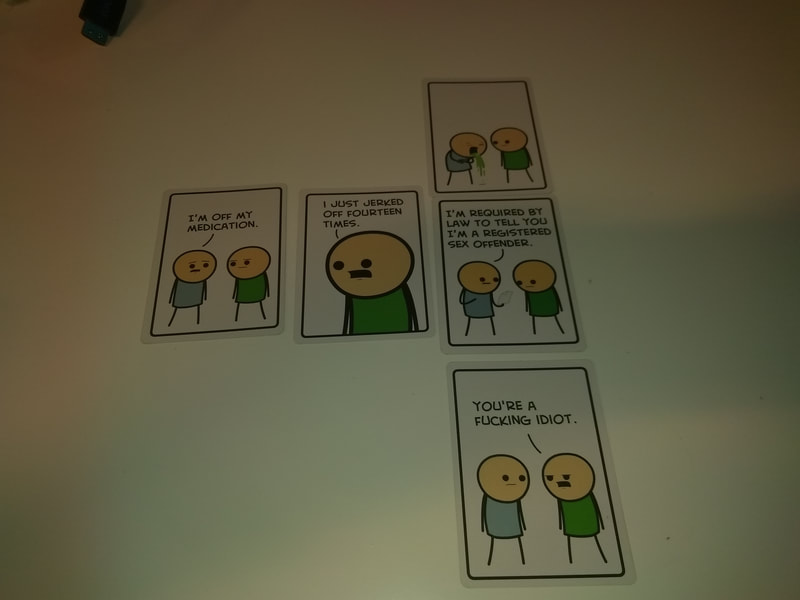
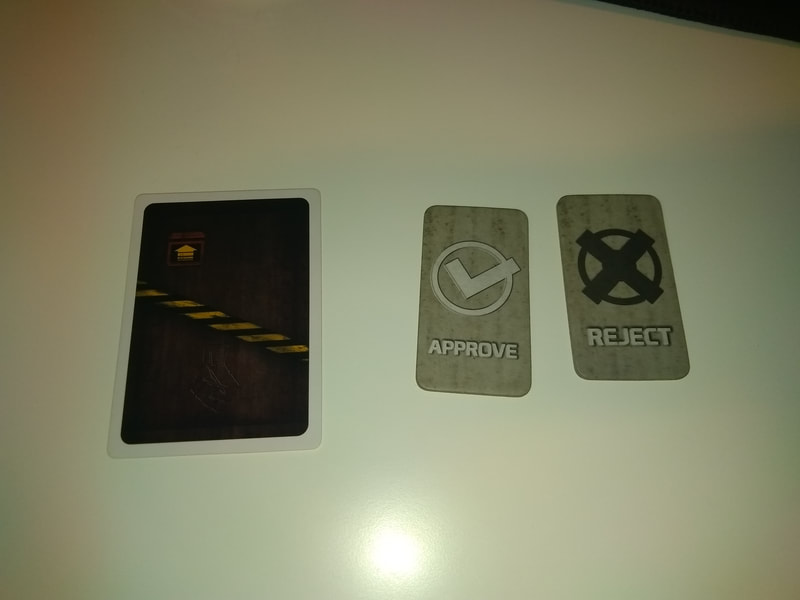
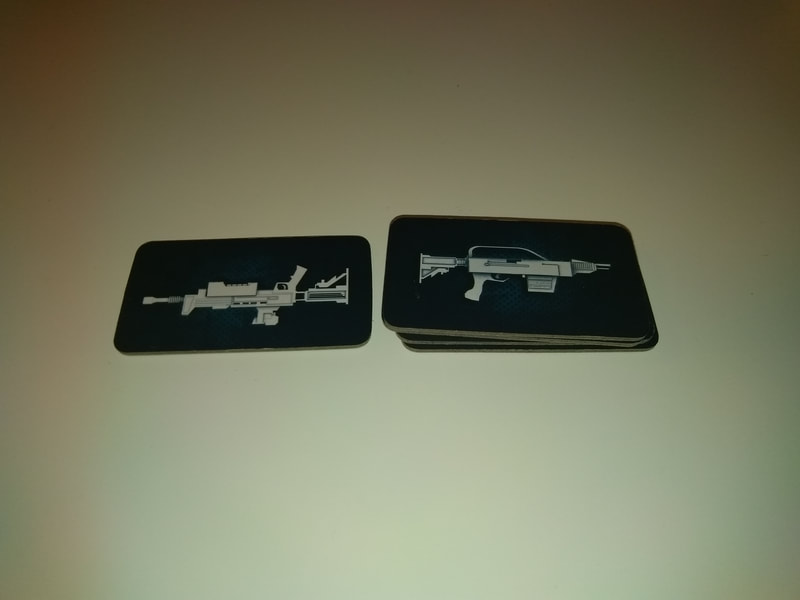
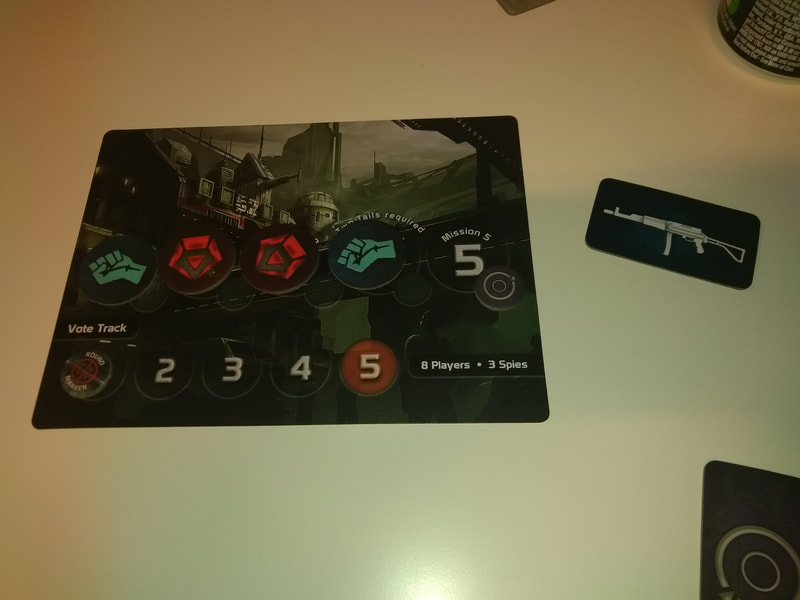
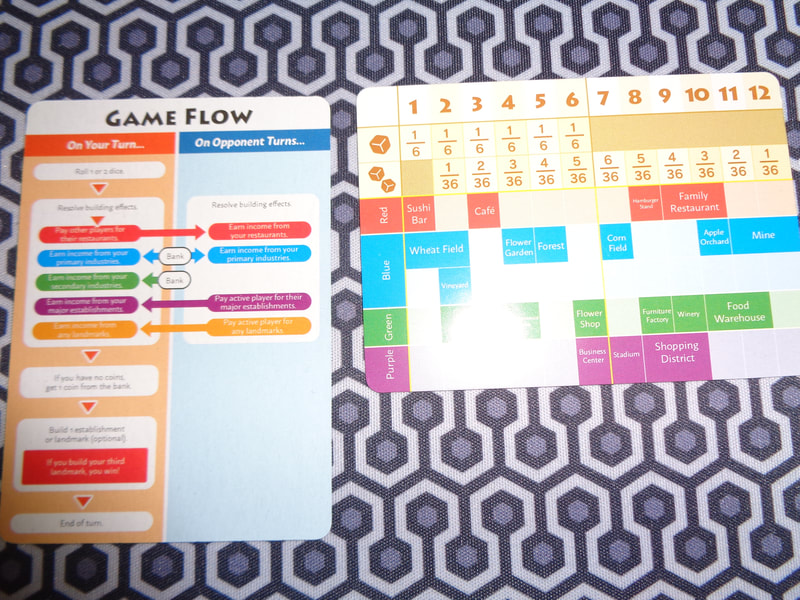
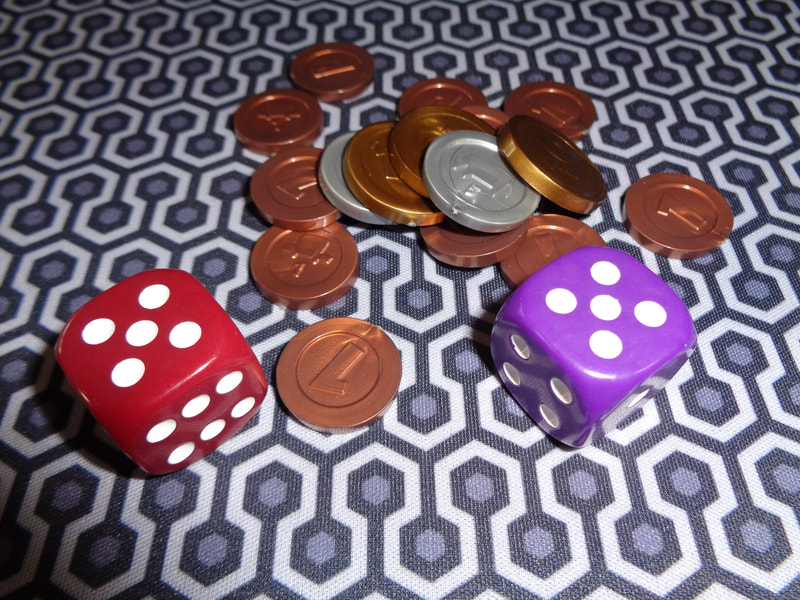
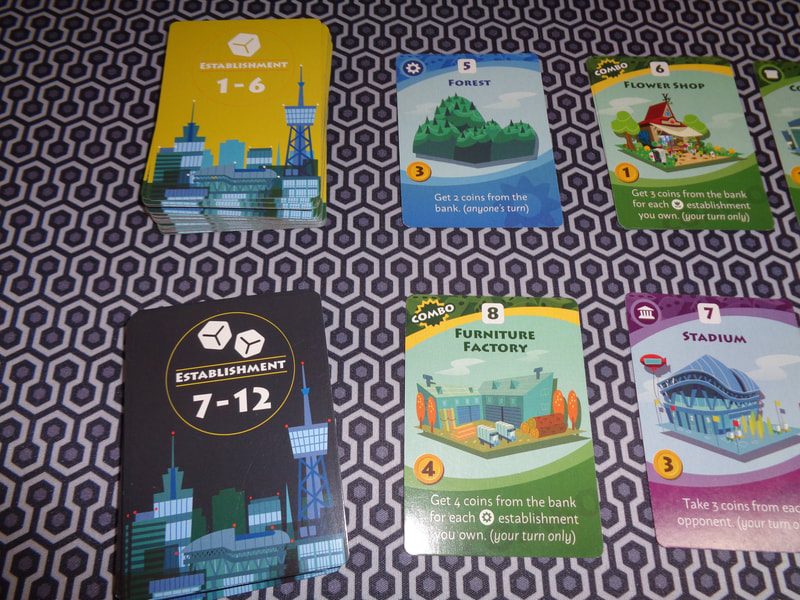
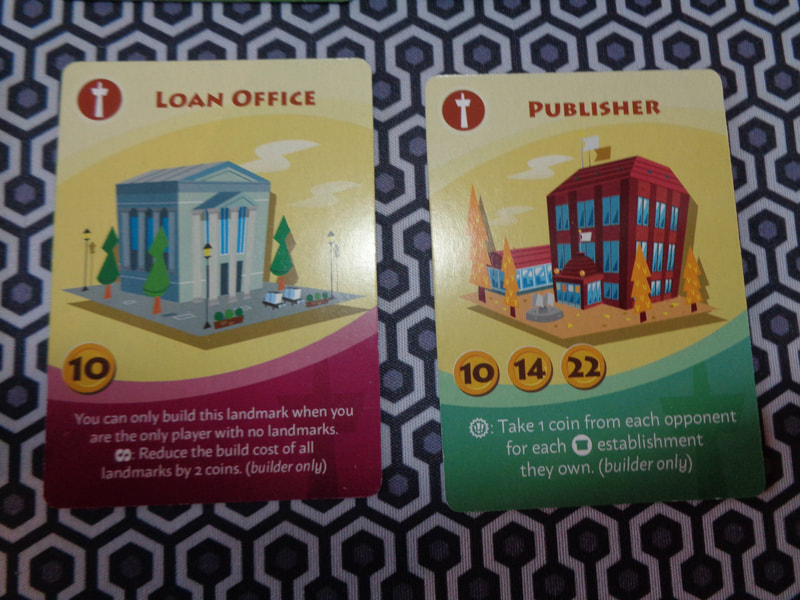
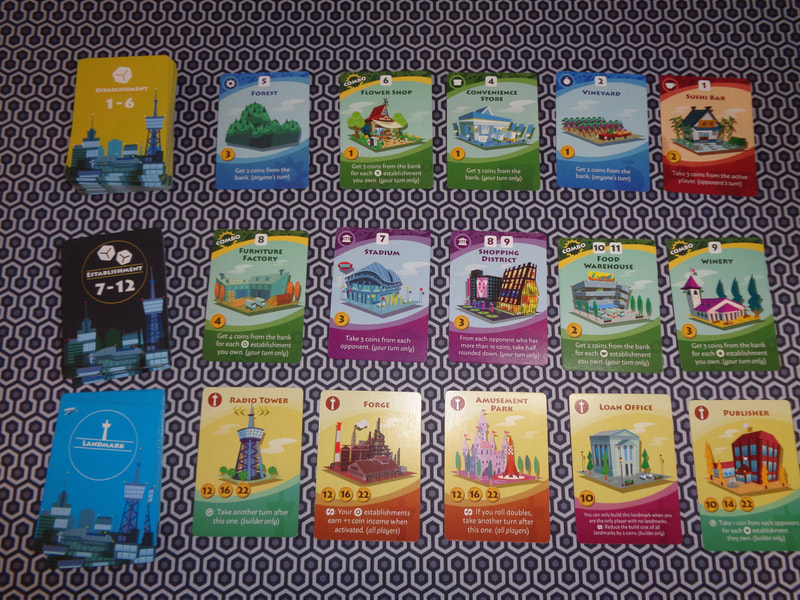
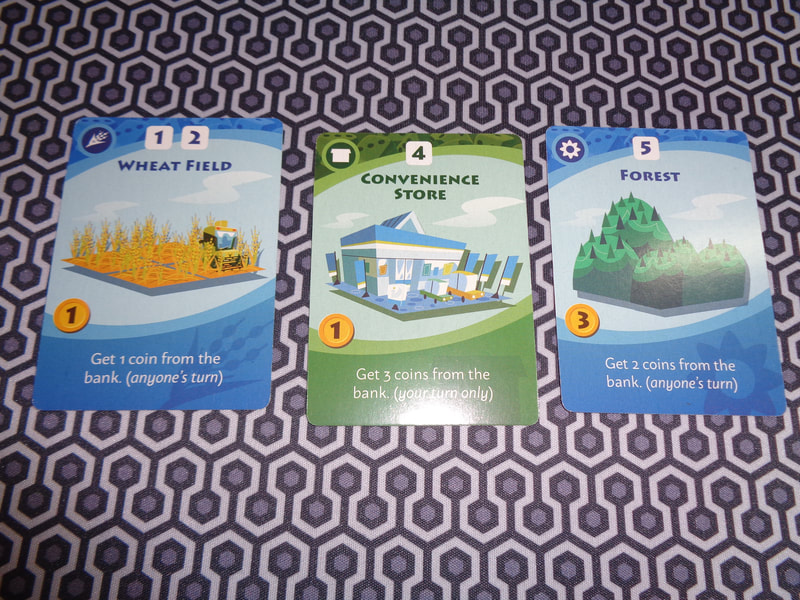
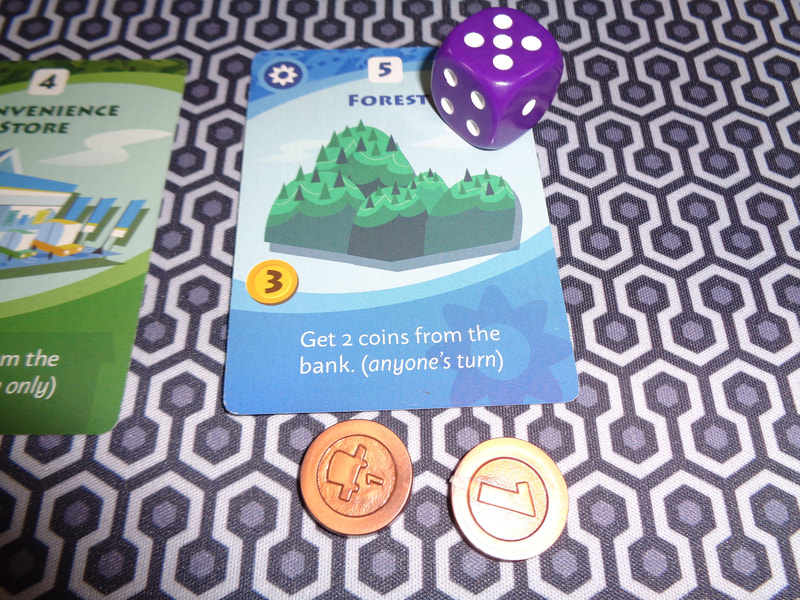
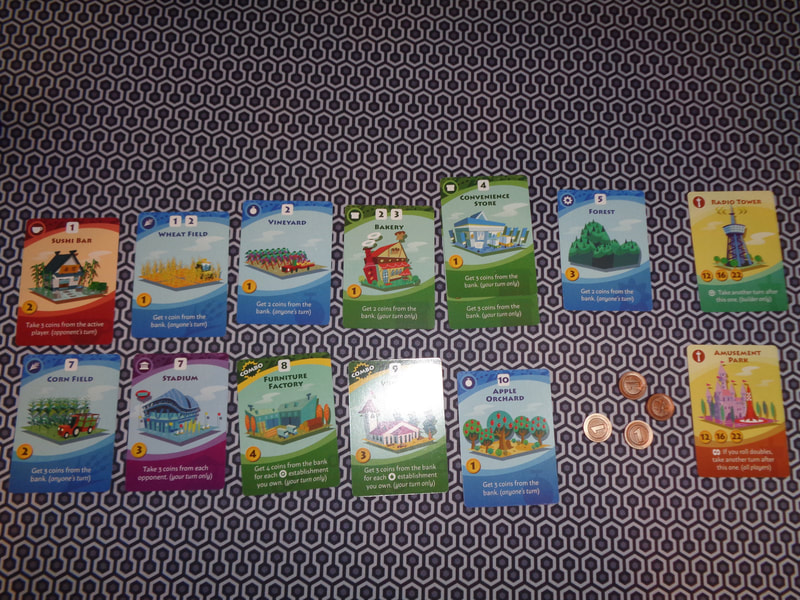
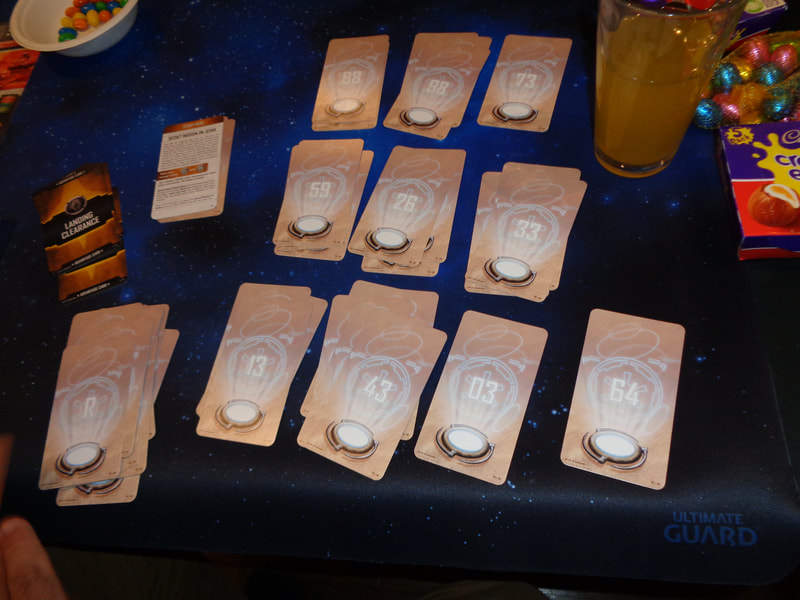
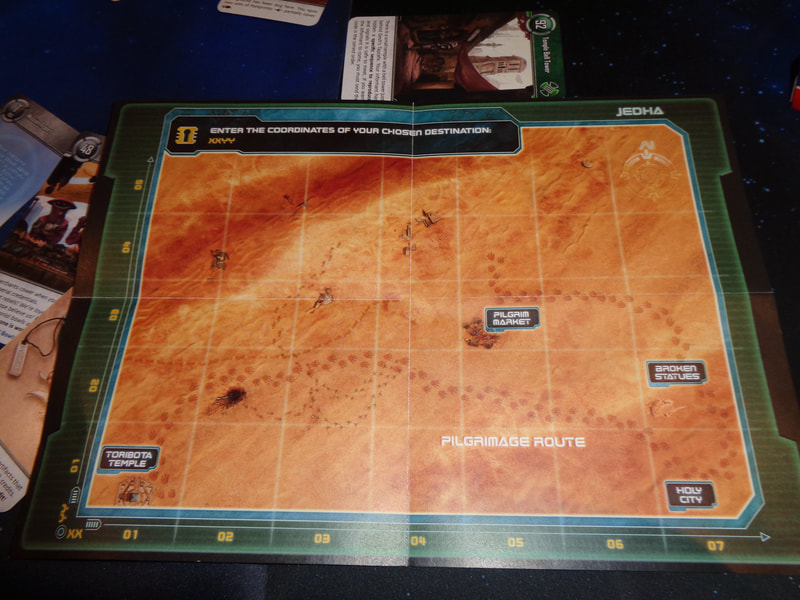
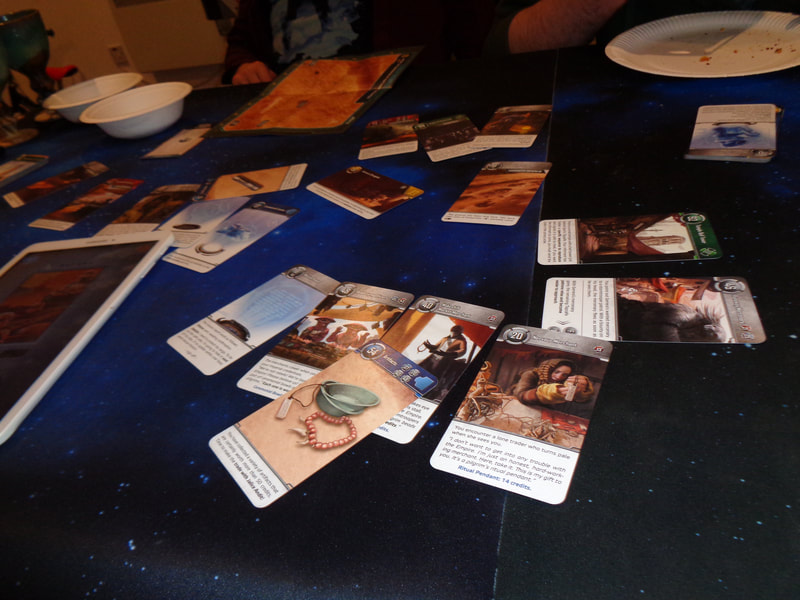
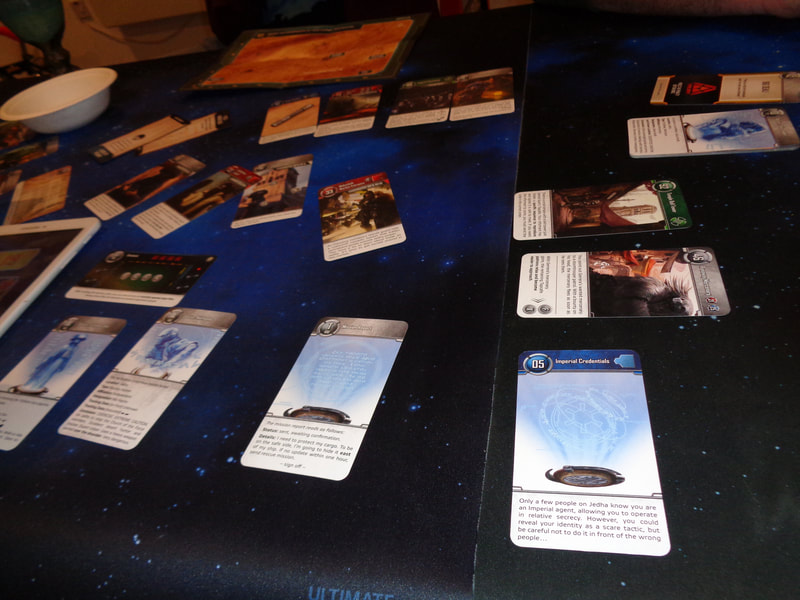
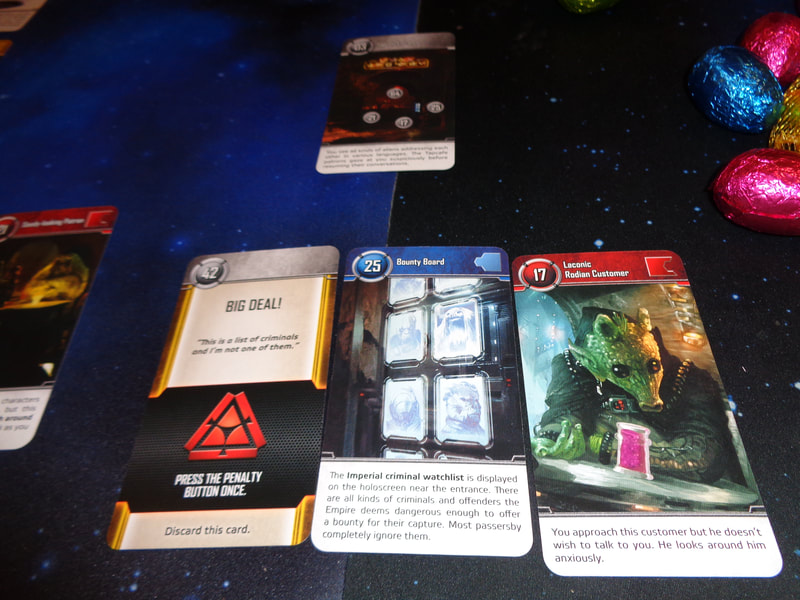
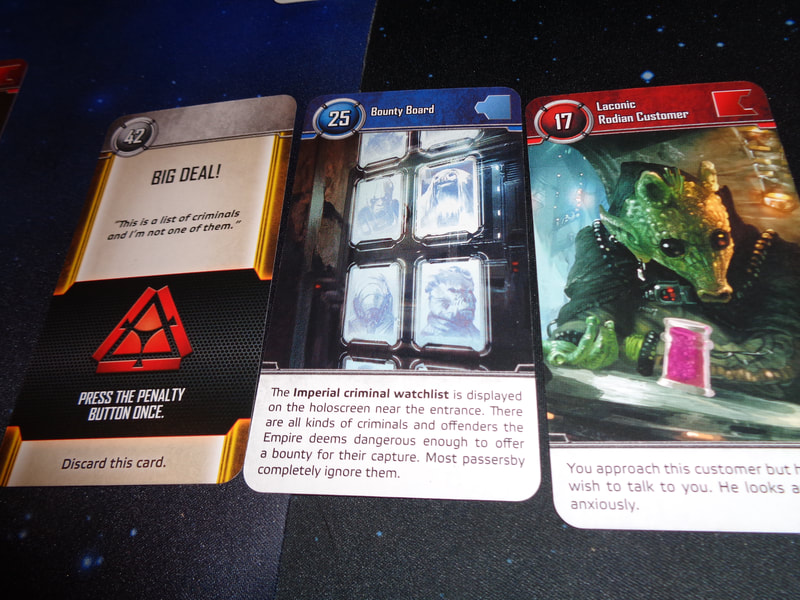
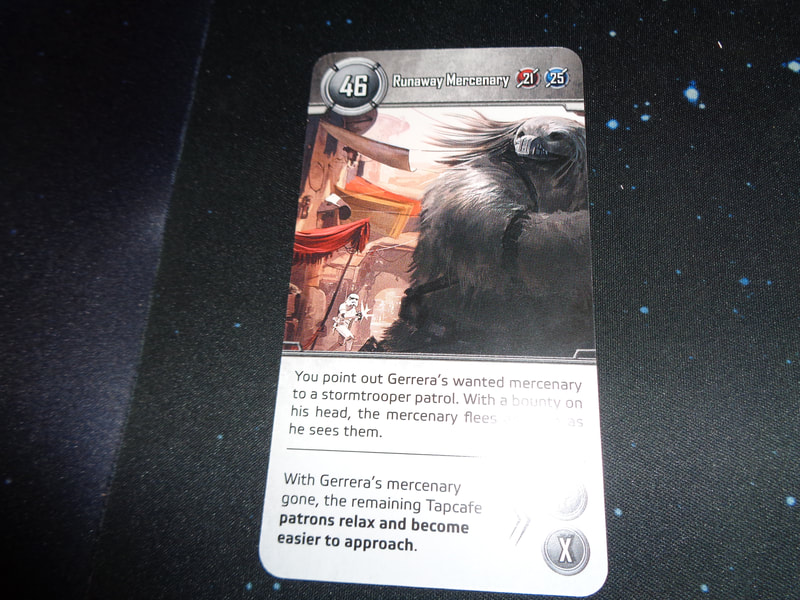
 RSS Feed
RSS Feed
